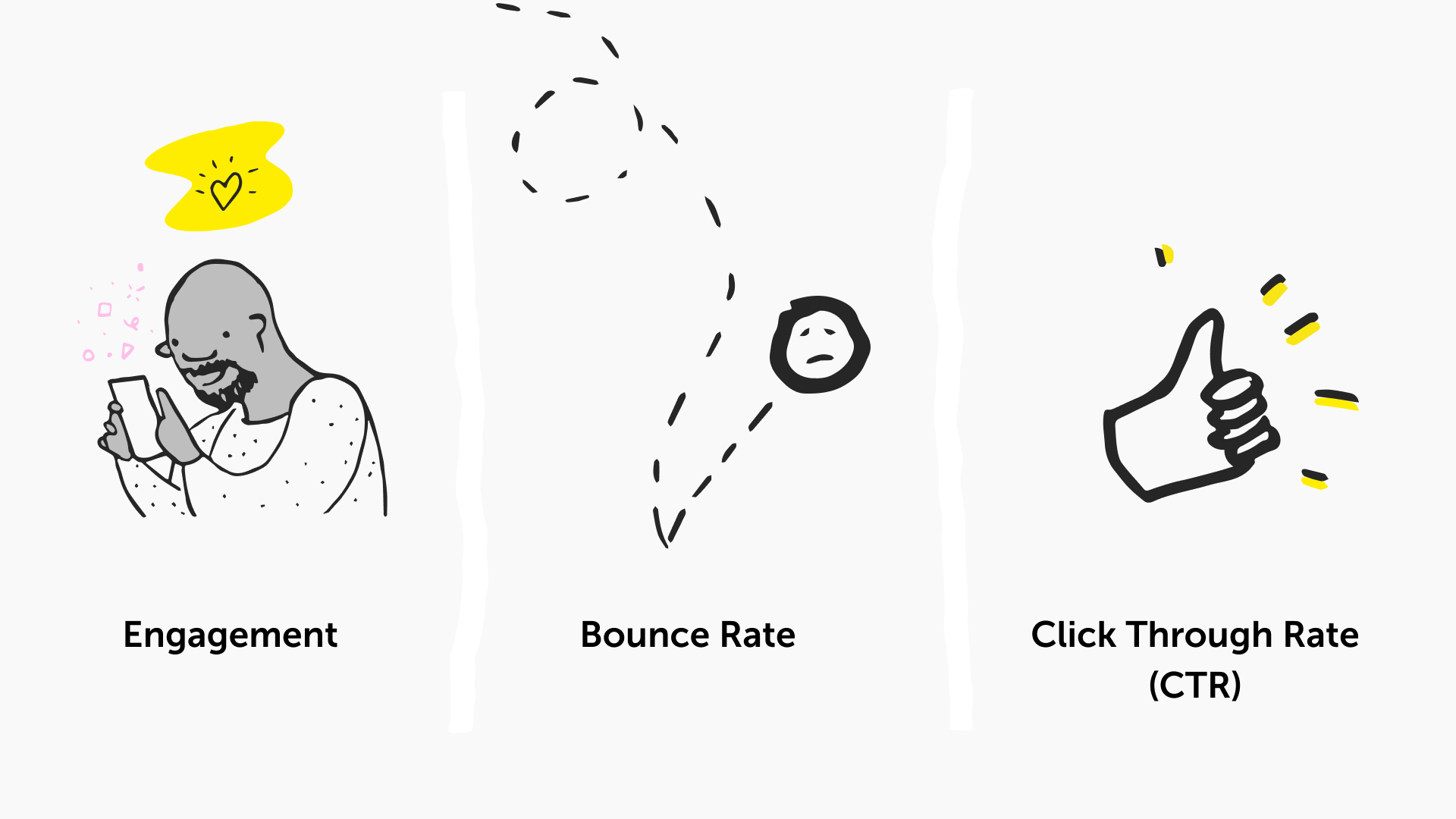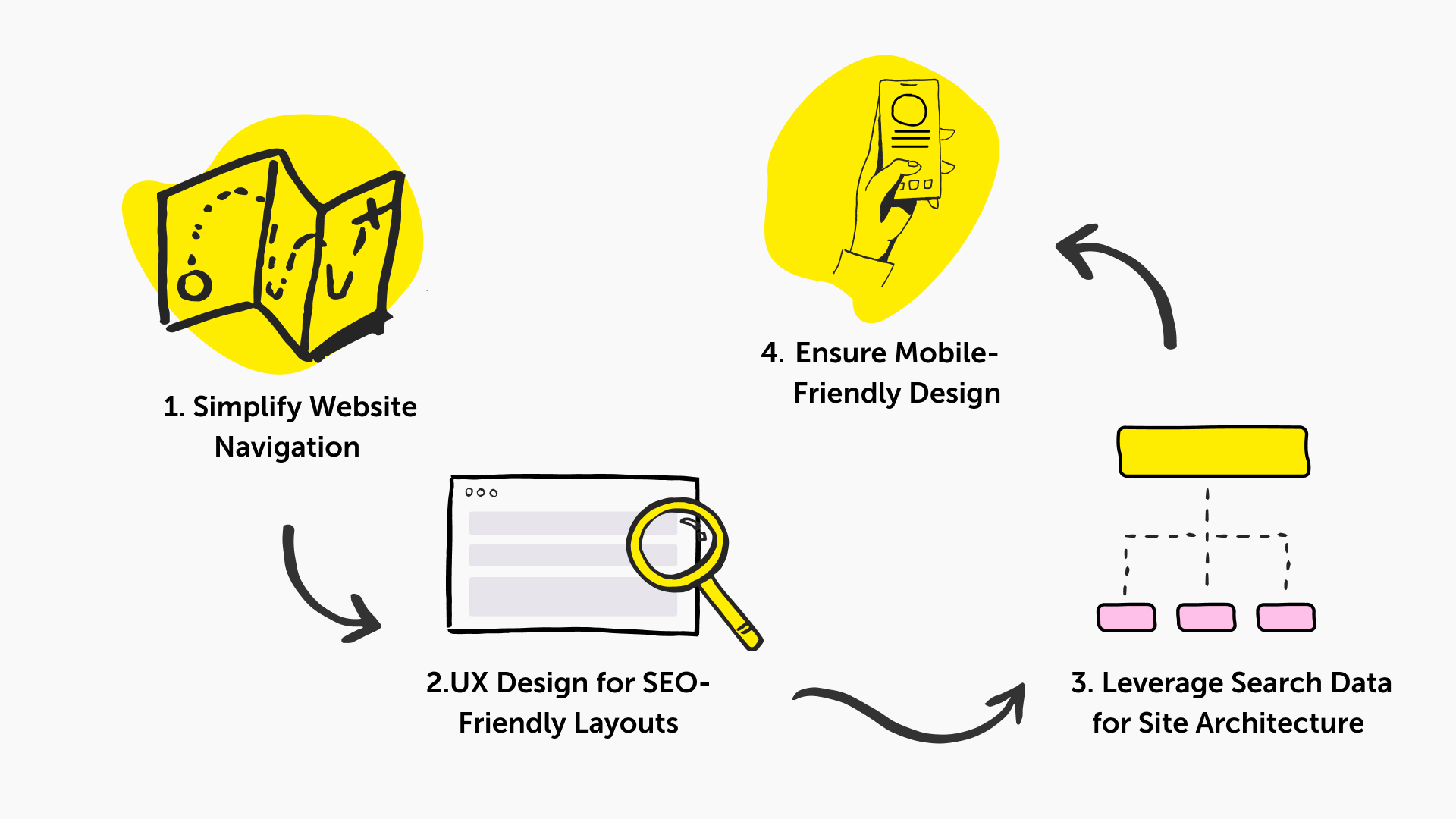
In the ever-evolving landscape of digital presence, the symbiotic relationship between User Experience (UX) and Search Engine Optimisation (SEO) has become pivotal for online success. A mere decade ago, the SEO terrain was dominated by keywords and backlinks, but today, the metrics driving search rankings delve deep into user engagement characteristics. Bounce rate, time spent on a website, and pages visited are now indispensable factors shaping a website’s standing in Search Engine Results Pages (SERPs).
Google, the paramount search engine, places significant weight on genuine human behaviour when determining a site’s worthiness for high search ranks. This paradigm shift has propelled usability and UX design into the limelight, making them integral components of effective SEO strategies. Beyond the conventional on-page SEO tactics, a website’s success is now intricately tied to its user experience.
As search engine algorithms continually adapt to provide users with the most relevant information, the significance of UX in influencing SERP rankings is on a steadfast ascent. User experience is no longer merely a conduit for effective message delivery; it stands as a de-facto ranking factor, poised to play an increasingly pivotal role in the foreseeable future of SEO.
Understanding the synergy between UX and SEO is imperative to navigate this dynamic landscape successfully. In this blog, we explore the inseparable connection between the two, shedding light on how strategic UX design and usability considerations can be harnessed to elevate a website’s SEO performance.
Does UX affect SEO?
User Experience (UX) is the encompassing term for any user interaction with a product or service, focusing on the user’s emotions and the ease of performing desired activities. UX design aims to create experiences that are simple, efficient, relevant, and enjoyable, considering factors such as website design, navigation, content quality, site responsiveness, and overall impression.

- Engagement: A positive UX enhances user engagement, as users are more likely to spend time on a user-friendly and visually appealing website that provides relevant information. This increased engagement often leads to users sharing the website with others, resulting in more traffic and improved search rankings.
- Bounce Rate: High bounce rates, where users leave a site after visiting only one page, indicate poor UX. Search engines interpret this as a signal that the website is not relevant or useful, potentially leading to a lower search ranking.
- Click-Through Rate (CTR): Positive UX improves CTR, the ratio of users clicking on a link to the total users viewing a page. A high CTR signals to search engines that the website is valuable and relevant, positively impacting search rankings.
The relationship between UX and SEO is reciprocal, with each influencing the other. While positive UX enhances SEO, it’s essential to note that SEO strategies can impact UX. Over-optimising a website for search engines, such as through keyword stuffing, may lead to poor UX, negatively affecting user engagement and, subsequently, SEO. Striking a balance between SEO and UX is crucial to ensure that content appeals to both the target audience and search engines.
Why is UX important to SEO?
The significance of User Experience (UX) in SEO has escalated with Google’s evolving ranking factors. The era of keyword repetitions and backlink quantity has shifted towards a user-centric approach. Google now employs advanced technologies like artificial intelligence (AI), machine learning (ML), and natural language processing (NLP) to analyse and deliver optimal outcomes. The introduction of the EAT concept by Google emphasises search intent, page speed, mobile-friendliness, and dwell duration as crucial ranking considerations—all integral components of a rich user experience.
A superior user experience becomes a distinguishing factor between first and second-place rankings. Offering visitors a seamless and engaging experience not only encourages prolonged stays on your website but also sends positive quality signals to Google. Understanding and optimising user experience has become integral in securing a prominent place in the ever-evolving landscape of SEO.
Read more about the importance of UX in SEO in our blog.
Combining UX and SEO into your website
In the realm of digital marketing, seamlessly integrating User Experience (UX) and Search Engine Optimisation (SEO) has become imperative for achieving the common goal of audience engagement. As users navigate webpages, SEO addresses their queries, while UX addresses their navigational challenges. This symbiotic relationship is crucial in the current landscape, as evidenced by Google’s continuous efforts to enhance user experience and incorporate effective SEO methods for a more meaningful audience interaction.
A stellar example of successful UX and SEO integration is evident in IKEA’s design strategy. IKEA’s website not only serves its purpose but also weaves a narrative at every turn, guiding users to relevant landing pages. The strategic use of colour schemes, tags, and categories on the website actively encourages users to prolong their stay and engage more deeply with the content.
Empathy emerges as a key element in optimising web pages with the right keyword combinations. The era of relying solely on exact keyword matches for high rankings has long passed. Presently, success hinges on understanding and connecting with the audience, thinking beyond the conventional and envisioning broader possibilities.
Google’s evolution over the last five years underscores its commitment to steering clear of easily manipulable ranking signals, such as links and keyword stuffing. Instead, the focus has shifted towards comprehending audience purchasing intent and analysing their search queries. This approach promises more refined and sustainable outcomes, emphasising the importance of a nuanced understanding of user behaviour for both UX and SEO practitioners. As the digital landscape continues to evolve, the synergy between UX and SEO remains a potent force in shaping a website’s success.
4 Essential UX Design Principles Impacting SEO
In the ever-evolving digital landscape, the synergy between User Experience (UX) design and Search Engine Optimisation (SEO) is indispensable for achieving a prominent position in search results and ensuring a positive user experience. Let’s delve into the five fundamental UX design principles that exert a significant influence on SEO.

1. Simplify Website Navigation:
Traditional SEO wisdom favoured complex site structures, assuming that more pages equated to better rankings. However, the new norm emphasises quality over quantity. A single, content-rich, and user-friendly page can serve as a valuable SEO asset for diverse search queries.
2. UX Design for SEO-Friendly Layouts:
Aesthetics and content formatting can sometimes clash with SEO goals. Striking the right balance between UX design and on-page SEO enhances both usability and organic traffic generation. Aligning layout formatting with SEO objectives can create a harmonious synergy that benefits both aspects.
3. Leverage Search Data for Site Architecture:
The era of creating numerous SEO landing pages for specific queries is obsolete. Embrace a minimalist strategy that prioritizes broader themes over specific keywords. This approach aligns with evolving search algorithms and focuses on delivering quality content and user satisfaction.
4. Ensure Mobile-Friendly Design:
Mobile-responsive design is imperative for both usability and SEO. With mobile searches constituting over half of all traffic, neglecting mobile responsiveness can alienate a significant portion of your audience. Prioritising mobile-friendly design enhances user engagement metrics on various devices, including tablets and multiple web browsers.
In conclusion, integrating these UX design principles into your SEO strategy not only ensures a user-friendly experience but also aligns your website with evolving search algorithms. By prioritising simplicity, mobile responsiveness, and visual stability, you not only enhance user satisfaction but also optimise for SEO success in an ever-competitive digital landscape.
How can you utilise data to measure your SEO and UX?
Ensuring your users have the best possible experience is pivotal for the success of your website. While you may be familiar with your site’s intricacies and potential flaws, your users lack the same level of commitment and patience. Therefore, eliminating flaws that users may not comprehend is crucial for your site’s success.
In the realm of user experience (UX) and search engine optimisation (SEO), effective measurement is paramount. Without proper tracking, your efforts to enhance user experience and SEO may not yield meaningful results. Analysing user behaviour, engagement, and conversion rates provides valuable insights into opportunities for improvement in both UX and search rankings.
To gather relevant data, user testing and surveys offer direct feedback on website user experience. A/B testing compares the performance of different website elements, helping identify areas for enhancement. The key is to consistently reference data, ensuring your tactics align realistically with your expectations for UX and SEO.
Here are some ways to guarantee your website visitors have a significant experience:
User Testing:
- Real-time feedback reveals potential flaws that might be unknown.
- Hearing consumer feelings about your product provides insights into user experience challenges.
A/B Testing:
- Crucial for deciding on new site design, content, and usability improvements.
- Testing modifications with real users is essential to determine the optimum approach.
User Personas:
- Understanding your target audience is crucial for optimising search visibility.
- Aligning content with user desires and needs enhances the overall user experience.
Heat-maps and Session Recordings:
- Observing how users interact with your site informs design and content placement.
- Insights from watching user behaviour, such as scrolling and clicking, contribute to a more user-friendly site.
Ongoing measurement and research such as user testing, A/B testing and leveraging tools like heat maps are integral components of ensuring a superior user experience. By actively addressing user needs and continually refining your site based on real data, you can elevate both UX and SEO, ultimately driving better results for your website.
The Synergy of UX Design in Elevating SEO Performance
Creating a website that is not only visually appealing but also easy to navigate is at the core of good User Experience (UX) design. While UX design may not be directly synonymous with Search Engine Optimization (SEO) like User Interface (UI) design, it plays a significant role in enhancing your site’s ranking. Several parameters integral to UX design contribute to SEO performance, shaping a holistic strategy for digital success.
1. Bounce Rate Optimisation:
- A critical metric for search engines, the bounce rate reflects how long visitors stay on your site. Minimising this rate is crucial for improved SEO performance.
- By focusing on generating quality content that precisely caters to the needs of your visitors, you can encourage prolonged stays on your website.
- A lower bounce rate signals to search engines that your content is relevant and engaging, positively impacting your SEO ranking.
2. Meta Tags for SEO Enhancement:
- Meta tags play a pivotal role in influencing search engine perception of your content. Optimising meta titles and meta descriptions is an effective strategy for boosting SEO results.
- Crafting compelling meta tags that entice users to click not only improves click-through rates but also signals to search engines that your content is valuable.
- The strategic use of meta tags aligns with UX principles by providing users with clear and enticing information about the content they are about to explore.
3. URL Structure for User-Friendly Navigation:
- An often overlooked aspect, URL structure contributes significantly to an efficient user experience and, consequently, SEO success.
- Effective URL architectures help orient viewers to your site’s hierarchy, providing clarity about the content and its organization.
- Strategic inclusion of keywords in your URL aids search engines in indexing web pages based on relevant terms. Clear and concise URLs benefit both search engine crawlers and website users.
- Concentrating on creating easily understandable URLs enhances user experience and aligns with search engine preferences, fostering improved SEO rankings.
In conclusion, the connection between UX design and SEO is undeniable, with UX serving as a potent tool for optimising various elements crucial to search engine algorithms. By addressing bounce rates, optimising meta tags, and refining URL structures, UX design becomes a cornerstone in enhancing overall SEO performance. Recognising the interconnectedness of these factors and incorporating them into your digital strategy ensures a harmonious blend of user-centric design and SEO success.
In the dynamic digital landscape, the symbiotic relationship between UX, design and SEO is not just about enhancing user experience; it’s a strategic approach to elevate your site’s visibility and drive business growth. As you prioritise user engagement through optimised bounce rates, compelling meta tags, and user-friendly URL structures, you’re not just improving your SEO ranking—you’re creating an environment where visitors become customers. With a website that captivates and a seamless user journey that converts, you’re not just boosting SEO; you’re maximising your potential for sales and success. Remember, every click is an opportunity, and by harnessing the power of UX design, you’re not just optimising for algorithms; you’re optimising for conversions and revenue.
We drive commercial value for our clients by creating experiences that engage and delight the people they touch.
Email us:
hello@nomensa.com
Call us:
+44 (0) 117 929 7333




